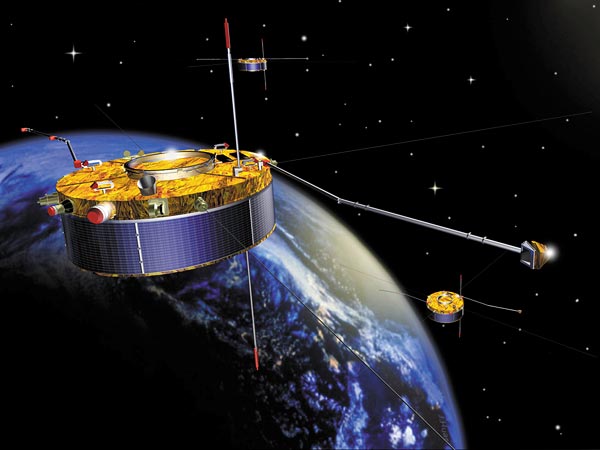Giant Veil of "Cold Plasma" Discovered High Above Earth
Source: news.nationalgeographic.com

Clouds of charged particles stretch a quarter the way to the moon, experts say.
Clouds of "cold plasma" reach from the top of Earth’s atmosphere to at least a quarter the distance to the moon, according to new data from a cluster of European satellites.
Earth generates cold plasma—slow-moving charged particles—at the edge of space, where sunlight strips electrons from gas atoms, leaving only their positively charged cores, or nuclei.
(Find out how cold plasma might also help explain why Mars is missing its atmosphere.)
Researchers had suspected these hard-to-detect particles might influence incoming space weather, such as this week’s solar flare and resulting geomagnetic storm. That’s because solar storms barrage Earth with similar but high-speed charged particles.
Still, no one could be certain what the effects of cold plasma might be without a handle on its true abundance around our planet.
"It’s like the weather forecast on TV. It’s very complicated to make a reasonable forecast without the basic variables," said space scientist Mats André, of the Swedish Institute of Space Physics.
"Discovering this cold plasma is like saying, Oh gosh, there are oceans here that affect our weather," he said.
The Trick to Finding Cold Plasma
Researchers already knew that some cold plasma existed in the ionosphere, about 60 miles (100 kilometers) above Earth’s surface. But few researchers had looked for the clouds between 12,400 and 60,000 miles (20,000 and 100,000 kilometers) high.
André and his colleague Chris Cully suspected the plasma could be out there, but they knew the positive charge of spacecraft wasn’t helping any search efforts.
Similar to the way cold plasma is created, sunlight strips electrons from spacecraft materials, making their hulls positively charged. Like two matching magnetic poles, a spacecraft would simply repulse any cold plasma around it.
To find the stuff, André and Cully instead analyzed anomalies in data from the European Space Agency’s Cluster II spacecraft.
This group of four satellites swings around Earth in a highly elliptical orbit. At the orbit’s peak, the probes reach nearly halfway to the moon.
The enormous distance gives researchers a chance to sweep through and monitor Earth’s magnetic field and electrical activity, including the influence of "hot" charged particles emitted by the sun.
Anomalies in the Cluster II data turned out to be shockwaves from cold plasma particles moving around the satellites.
Cold Plasma a Space Weather "Elephant"
In the end, the pair found that cold plasma makes up between 50 and 70 percent of all charged particles within the farther reaches of Earth’s magnetic field.
André says it’s now time to start updating space-weather models to take the extra cold plasma into account—at this point, for instance, nothing is known about how the plasma might affect solar storms.
This influence is "not a minor thing in space weather," André said. "It’s an elephant in the room."
Article from: news.nationalgeographic.com






















